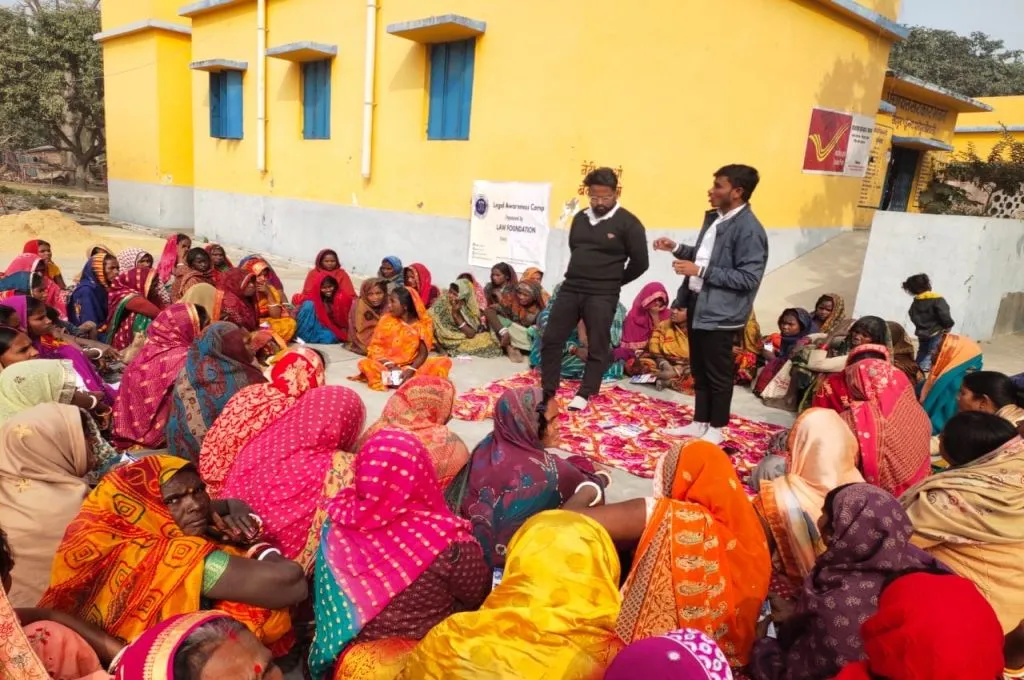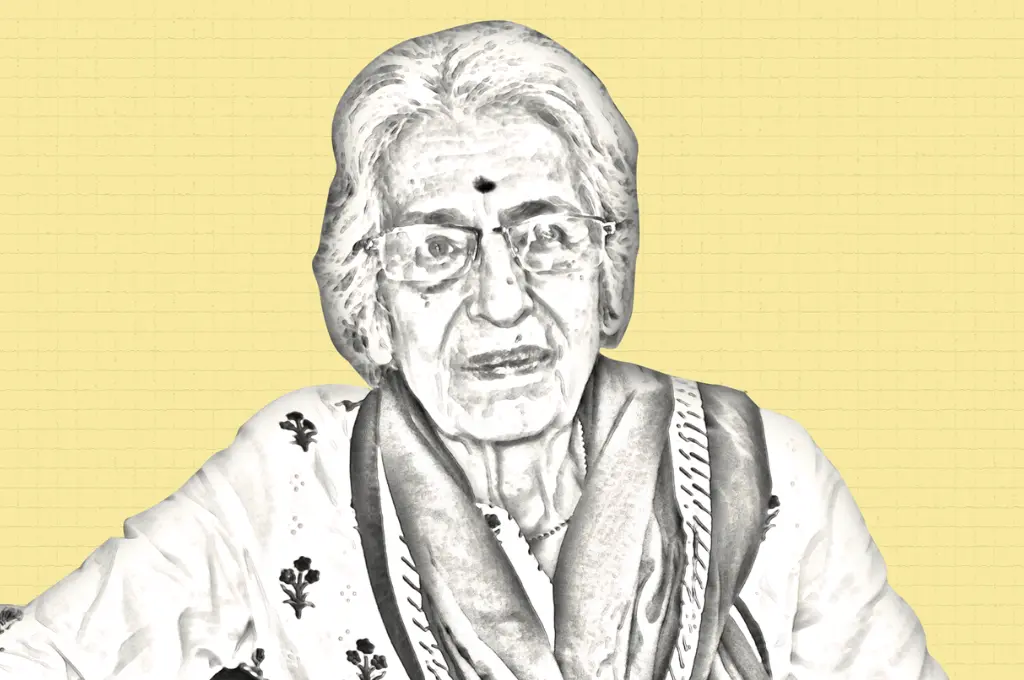The 2025 India Justice Report found that 42 percent of all undertrial prisoners in India came from just three states—Uttar Pradesh, Bihar, and Maharashtra. Bihar has the second-highest number of prisoners in the country. A disproportionately large number—approximately 66 percent—are from marginalised backgrounds.
Since 2019, our nonprofit LAW Foundation has been providing socio-legal aid, rehabilitation support, and reintegration services to the marginalised and historically disadvantaged custodial population of Bihar. We prioritise prisoners who have been incarcerated for a long time, have been granted bail but cannot afford the surety bail bond, are unable to hire an advocate, and/or have been wrongfully imprisoned.
Through our work, we see first-hand how the current criminal justice system disproportionally affects marginalised communities.

1. A system entrenched in caste-based violence and prejudice
Bihar has a history of systemic caste-based violence. We are currently working in Patna and Jehanabad districts, consciously focusing on areas where such violence is most acute.
We have witnessed how the hierarchies of life in jail mirror those in the outside world. Structural inequalities of caste, class, and gender, which exist in society, are replicated within the prison system.
This is evident from one of our current cases. A 16-year-old boy from a marginalised community was arrested for allegedly stealing a bike. The police beat him severely before taking him to the station. Although the station had 16 CCTV cameras, he was deliberately kept in a room without any surveillance.
Caste and power operate within India’s criminal justice system through acts of violence, institutional complicity, fear, and denial.
When he was finally produced before the Juvenile Justice Board, the principal magistrate issued a disciplinary action against responsible officials, all of whom belonged to the same dominant caste. The officials claimed the boy was a habitual offender and not a juvenile. When the case reached the Chief Judicial Magistrate (CJM), no lawyer represented the boy because of deep, pervasive casteism. We’re providing legal aid to him but were asked by many in power—including judges and the police—not to do so.
This is a reflection of how caste and power operate within India’s criminal justice system—through acts of violence, institutional complicity, fear, and denial.

To break this cycle, greater representation of marginalised communities in both the bar and the bench—that is, among lawyers and judges—is essential for real access to justice. We actively hire advocates from these communities, who often lack opportunities to practise. Courtrooms across India, especially at the district level, are overwhelmingly male and upper-caste, with high representation from socially dominant groups. When those tasked with interpreting the law do not come from the communities most affected by systemic injustice, legal processes remain skewed and unjust.
2. Wrongful incarceration due to prejudice
Once someone from a marginalised background is arrested, they are often named as the accused not just in one case but in multiple open FIRs of a similar nature. Even if they may have committed one theft, they’re implicated in four or five other incidents without any evidence, because the police want to shut open investigations to show they’ve solved crimes.
Deep-seated caste bias makes it easy to accuse Dalits, Adivasis, and other marginalised caste groups–sometimes because they may have committed a petty offence, or simply because they happened to be near the scene of a crime or offence. At times, the arrest is made on even more arbitrary grounds. In one instance, a rickshaw-puller was picked up while sleeping at a railway station and falsely accused in a case that had occurred far from where he was.
This traps those accused in a vicious cycle. They now have to defend themselves in multiple courts, for multiple cases, often in different locations. Many times, district courts deny bail in such matters, especially when there are multiple FIRs, forcing families to approach the High Court. But the cost of filing for bail in the High Court is significantly higher, which further deters them from approaching the court.
In our experience, even if the paperwork for bail is complete, the Patna High Court is so burdened with pending cases that it may take more than a month for the bail application to be listed. This means even if the accused is innocent and has not been convicted, they must remain in jail for weeks or months.
They end up spending more time in jail than the sentence they would have served if actually convicted. After months or years in jail, many experience mental trauma that forces them to confess to crimes they didn’t commit.
3. A dearth of quality legal practitioners at the district level
There’s a common myth that justice is ultimately delivered by the High Courts or the Supreme Court. But for marginalised communities, the real fight for justice plays out in district courts. The High Court doesn’t conduct trials; it primarily hears appeals and bail petitions. The entire process—bail hearing, charge framing, trial, and conviction—takes place in the lower courts. Yet these courts remain under-resourced and under-recognised.
As a result, there’s a lack of motivated, skilled advocates at the district level. Most advocates want to practise in the higher courts, meaning that cases drag on for 10 or 15 years, even for minor theft charges.
We consistently meet convicted prisoners from marginalised identities who have never considered appealing in higher courts. This isn’t because they are guilty, but because the idea of accessing higher courts feels impossible to them as they lack both the economic resources and the social capital to do so.
Accredited law institutions must make it mandatory for their graduates to practise in district courts for at least three to five years. Despite receiving the best education, many young lawyers struggle to practise effectively at this level because they have little understanding of the ground realities of district courts.

4. Processes that involve families are tough to navigate
A minor formality in securing bail in India’s courts is the requirement of an affidavit, typically from a close relative, but this becomes a major barrier for many.
In a lot of cases, the accused’s family cannot be traced, or they are not willing to step forward. They are scared of the police, and the legal process is unfamiliar. If the accused is the head of the family, their absence puts the household in an economically precarious position. If they are a migrant, they may not possess the required documents. Our social workers assist families in navigating the legal process and meeting their incarcerated relatives.
However, many accused individuals are either without families or have been abandoned. In one such case, a man employed as a sanitation worker was wrongfully accused because he was found drunk near a crime scene. He had a brother who could not be traced, which meant he remained in jail for three to four years without trial. We have submitted an affidavit on his behalf, but since we aren’t family, the process is slow and tedious and it may take a long time for the court to acknowledge it. The legal system doesn’t have a framework for such exceptions—it’s not built to accommodate those without support.
For transgender individuals, the system is even more exclusionary. Their families often do not accept them and may cut ties. Usually another trans individual or a friend is willing to submit the affidavit for them. But because the courts do not legally recognise such relationships, their affidavits are also not accepted at times.
5. Securing bail is a significant barrier
In Bihar, the traditional system of bail is largely based on surety bonds, wherein a person seeking bail must furnish documents showing land ownership or vehicle registration. There is no practice of cash bail bonds. This creates difficulties for those without any such assets.
As a solution, we started leveraging the system of Personal Recognisance (PR) Bail. A PR bond allows the accused to be released on the basis of a personal undertaking to appear for all court hearings, instead of furnishing property or money as surety.
Our social workers play a vital role in this process. Many undertrial prisoners don’t have easily reachable family members. Even when families can be located, they are frequently too economically or socially vulnerable to come forward. To bridge this gap, we visit the prisoner’s home, document their socio-economic status, and collect photographs as evidence.
This information is then included in a petition to the court, where we argue that, due to the family’s inability to provide surety, the accused should be released on a PR bond. If the court accepts the petition, the person is granted bail. But if the court rejects it, we escalate the matter to the district judge and, if necessary, to the High Court.
If an advocate does not take the case seriously, they may not follow these steps. The inmates usually lack both awareness of their options and the means or knowledge to pursue multiple appeals. The combination of PR bail bond and strong legal aid makes all the difference in ensuring access to justice.
6. Bail is temporary; trial is permanent relief
While securing bail offers temporary relief for the accused, true relief comes only through trial and acquittal. Take the example of someone charged with theft, where the maximum punishment is three years. If a person has already spent two and a half years in jail as an undertrial, furnishing bail at that stage brings little relief.
After being granted bail, an individual must appear in court on every hearing date. For people from marginalised communities, each court appearance means travel expenses, loss of daily wages or livelihood, and an inability to migrate for work. Missing even a single hearing can result in their bail being revoked, sending them back to jail.
Therefore, facilitating timely trials is essential, especially when the accused is close to completing the maximum sentence. In such cases, bail often imposes an additional burden, while systemic delays, such as absent witnesses or failure to frame charges, drag proceedings on for years. A trial, then, offers resolution for the accused. If they are acquitted, it restores their dignity and saves them from a permanent criminal record.
Reimagining free legal aid services
By law, every person is presumed innocent until proven guilty. Yet in practice, the system often doesn’t follow this principle. We make a conscious effort to understand the accused when the system does not stand by them. In Bihar, for instance, the language can change every 50 kilometres. In one case, a woman remained in jail simply because no one took the time to understand what she was saying. When we enlisted the help of a social worker who spoke this woman’s language, we found that her statements were valid and accurate and were able to secure her bail using that information.
When people know the law, they can use it to push back against abuse and resist control.
To truly improve access to justice, legal aid must also include legal literacy and awareness programmes—especially inside jails and in communities frequently targeted by the police. In one instance, a young person used what he had learned from our session in jail to inform his family that he was eligible for protection under the Juvenile Justice Act, which led to a timely intervention. In another case, a girl from a Musahar tola stood her ground during a police raid and stopped the officers from entering her home by citing the law that requires a female officer to be present. The police have not returned since.
Every citizen is entitled to free legal aid under Article 39(A) of the Indian Constitution, and no individual can be deprived of this right. Therefore, state governments need to focus on addressing the challenges that hinder the effective implementation of the concept and objectives of free legal services, especially at the district and taluka levels.
But these rights are often deliberately kept from marginalised communities—because when people know the law, they can use it to push back against abuse and resist control. This is why our work goes beyond litigation. To ensure access to justice, people need to be made aware of their rights.
Shalini, Anand, Ranjan, Khalid, and Gaurav contributed to this article.
—
Know more
- Learn how the excise act disproportionally affects marginalised communities in Bihar.
- Read more about how paralegal volunteers make justice accessible.




